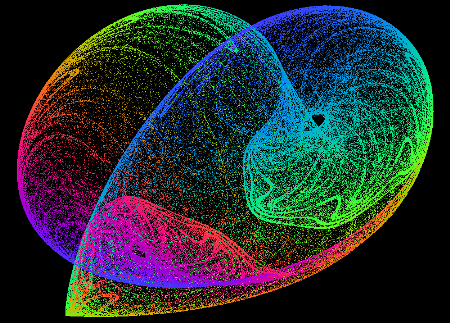 Human processes are notoriously unpredictable — communication breaks down, change in our environment outpaces our expectations, people have conflicting agendas. Yet we’ve manage to achieve amazing results both individually and as a species. We are just now beginning to understand the systems dynamics that challenge, frustrate, and empower us. As Walt Kelly once said, “We have met the enemy, and he is us.”
Human processes are notoriously unpredictable — communication breaks down, change in our environment outpaces our expectations, people have conflicting agendas. Yet we’ve manage to achieve amazing results both individually and as a species. We are just now beginning to understand the systems dynamics that challenge, frustrate, and empower us. As Walt Kelly once said, “We have met the enemy, and he is us.”
The biggest prank ever played on humans was when evolution brought to our human minds the ability to see things in terms of linear cause and effect. We anticipate simple causes, while our Universe is founded on non-linear, circular feedback cycles that are not so easy for us to recognize.
And to see the myriad feedback loops that actually drive what is happening in the world around us is just at the bounds of our limited rationality.
Managers and other leaders require measured control over the systems they manage in order to produce successful results. But most modern systems have grown complicated and complex (these are not the same thing) to the point that it is impossible to predict how even the smallest changes may amplify throughout the system to produce undesired consequences. On the other hand, measures to intentionally produce key desired results often become dampened to the point where the change seems to make no measurable difference.
No wonder so many of today’s managers feel overwhelmed and disenchanted with their work. How can you expect to make a meaningful difference when chaos renders your actions so much noise and so little signal.
Since the 1970’s the chaos mathematics, dynamical systems theory, and network analysis have been teaching us both about the limits of our thinking and about the fractal attractors that create our world, both physical and mental.
My interest in Complexity Theory is in application to the human endeavors of Leadership and Management.
Although it is generally not apparent to us, whenever two agents interact, the results are likely to be chaotic and unpredictable. So the question arises,
Under what conditions is it even possible to control or coordinate for a reliable outcome?
And how do we appropriately apply constraints and goals to efficiently achieve desired results in a world where the “Arms Race” system pattern is constantly shifting the goal line?
Of course almost all behavior occurs within a known dynamic or spatial range due to various constraints. But these constraints are often invisible and even unknowable. How do you manage for success when, as is so often the case today, you can’t even determine all the key variables? You can’t know how your own people will react to changes, much less what your competition is going to do in response to your current plans. It is amazing we get anything done!
Explore tools instead of problems
Instead of exploring root causes of problems, we need to be looking for tools to nudge systems feedback patterns in a useful direction. Instead of doing annual strategic business planning, we need to be building organizational flexibility and team resiliency through stochastic tinkering. Instead of saving all of our rewards for retirement we must explore work/life balance.
The new systems-process centered understandings require a new vocabulary of concepts. Without these foundations, we keep driving our world into further chaos and perturbing the very systems that underlie our eco-system’s unique ability to sustain the good life.
It is my goal to facilitate the recognition of our reciprocal connections, the humane values of individual centric humanism, and the development of vocabulary, models, and tools that center us in our bodies, our communities, and our ecological environments.
The nature of what it means to live from our highest humanity is reciprocal relationship and responsibility to those others, both human and Natural, who make us most gloriously human. It is here that we will find the inspiration and enthusiasm to become our highest and best human self.
